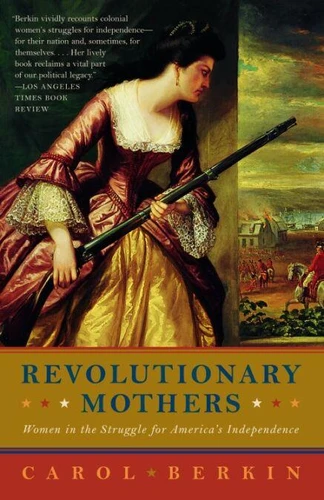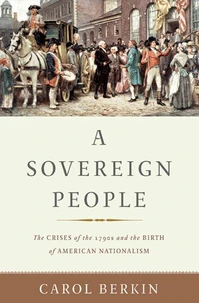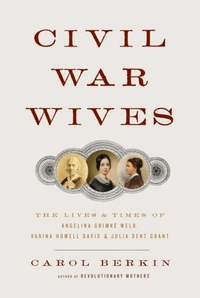Revolutionary Mothers. Women in the Struggle for America's Independence
Par :Formats :
Disponible dans votre compte client Decitre ou Furet du Nord dès validation de votre commande. Le format ePub protégé est :
- Compatible avec une lecture sur My Vivlio (smartphone, tablette, ordinateur)
- Compatible avec une lecture sur liseuses Vivlio
- Pour les liseuses autres que Vivlio, vous devez utiliser le logiciel Adobe Digital Edition. Non compatible avec la lecture sur les liseuses Kindle, Remarkable et Sony
- Non compatible avec un achat hors France métropolitaine
 , qui est-ce ?
, qui est-ce ?Notre partenaire de plateforme de lecture numérique où vous retrouverez l'ensemble de vos ebooks gratuitement
Pour en savoir plus sur nos ebooks, consultez notre aide en ligne ici
- Nombre de pages224
- FormatePub
- ISBN978-0-307-42749-6
- EAN9780307427496
- Date de parution18/12/2007
- Protection num.Adobe DRM
- Taille1 Mo
- Infos supplémentairesepub
- ÉditeurVintage
Résumé
A groundbreaking history of the American Revolution that "vividly recounts Colonial women's struggles for independence-for their nation and, sometimes, for themselves.... [Her] lively book reclaims a vital part of our political legacy" (Los Angeles Times Book Review). The American Revolution was a home-front war that brought scarcity, bloodshed, and danger into the life of every American. In this book, Carol Berkin shows us how women played a vital role throughout the conflict.
The women of the Revolution were most active at home, organizing boycotts of British goods, raising funds for the fledgling nation, and managing the family business while struggling to maintain a modicum of normalcy as husbands, brothers and fathers died. Yet Berkin also reveals that it was not just the men who fought on the front lines, as in the story of Margaret Corbin, who was crippled for life when she took her husband's place beside a cannon at Fort Monmouth.
This incisive and comprehensive history illuminates a fascinating and unknown side of the struggle for American independence.
The women of the Revolution were most active at home, organizing boycotts of British goods, raising funds for the fledgling nation, and managing the family business while struggling to maintain a modicum of normalcy as husbands, brothers and fathers died. Yet Berkin also reveals that it was not just the men who fought on the front lines, as in the story of Margaret Corbin, who was crippled for life when she took her husband's place beside a cannon at Fort Monmouth.
This incisive and comprehensive history illuminates a fascinating and unknown side of the struggle for American independence.
A groundbreaking history of the American Revolution that "vividly recounts Colonial women's struggles for independence-for their nation and, sometimes, for themselves.... [Her] lively book reclaims a vital part of our political legacy" (Los Angeles Times Book Review). The American Revolution was a home-front war that brought scarcity, bloodshed, and danger into the life of every American. In this book, Carol Berkin shows us how women played a vital role throughout the conflict.
The women of the Revolution were most active at home, organizing boycotts of British goods, raising funds for the fledgling nation, and managing the family business while struggling to maintain a modicum of normalcy as husbands, brothers and fathers died. Yet Berkin also reveals that it was not just the men who fought on the front lines, as in the story of Margaret Corbin, who was crippled for life when she took her husband's place beside a cannon at Fort Monmouth.
This incisive and comprehensive history illuminates a fascinating and unknown side of the struggle for American independence.
The women of the Revolution were most active at home, organizing boycotts of British goods, raising funds for the fledgling nation, and managing the family business while struggling to maintain a modicum of normalcy as husbands, brothers and fathers died. Yet Berkin also reveals that it was not just the men who fought on the front lines, as in the story of Margaret Corbin, who was crippled for life when she took her husband's place beside a cannon at Fort Monmouth.
This incisive and comprehensive history illuminates a fascinating and unknown side of the struggle for American independence.






